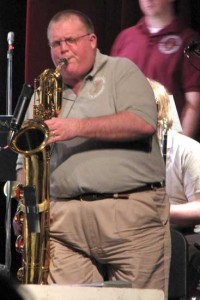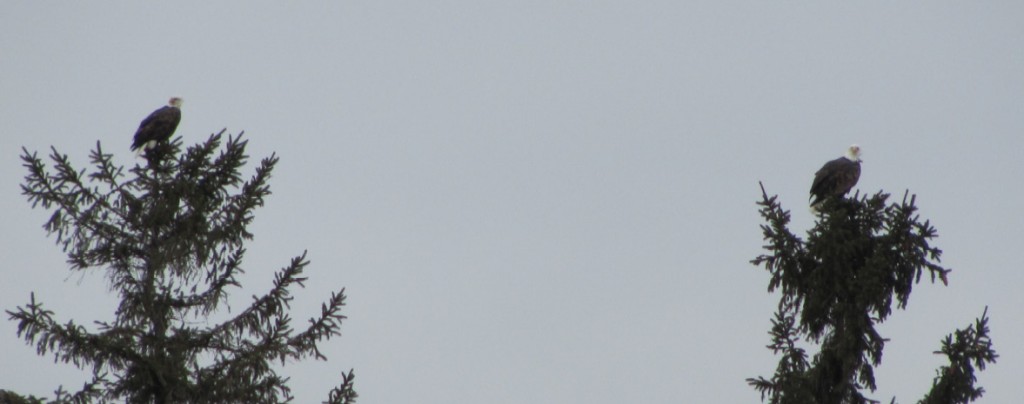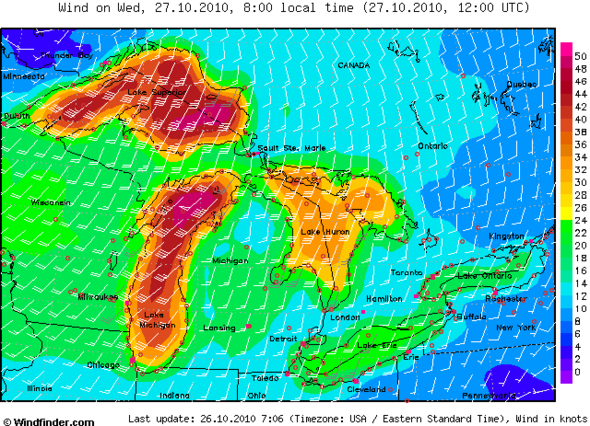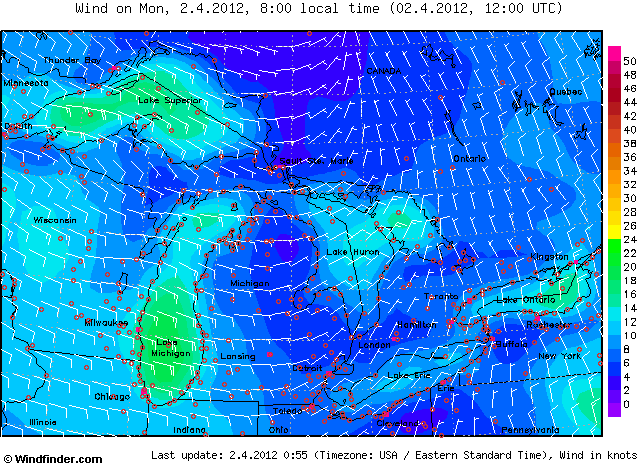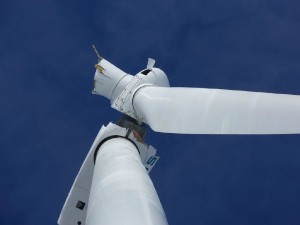Xcel demand down, down, down
September 28th, 2014
I’ve been saying this for so many years, that electric demand is down, down, down, and instead, Xcel Energy (and all the others) have been saying it’s going UP, UP, UP (even though Mikey Bull said years ago that they wouldn’t need power for a while), and they’re applying for and getting Certificates of Need for all these permits for utility infrastructure that are obviously designed to market and sell the surplus, and the Public Utilities pretends to be oblivious (I say “pretends” because I cannot believe they’re that unaware and uninformed.).
This is a must read:
Here’s the short version from Xcel:
2024 is expected to be about what it was back in 2007, the industry peak year. DOH! But note this — there’s a “small capacity surplus in 2016.” DOH!
And given the surplus which we’ve known has been present and looming larger, that’s why they then ask for withdrawal of the Certificate of Need for the Prairie Island uprate because it isn’t needed (and really, that was just what, 80 MW or so? Or 80 MW x 2 reactors, 160 MW?). If they don’t need that small uprate, why on earth would they need so much more?
But what do I know…
Hollydale Transmission Line was clearly not needed, and they withdrew that application…
CapX 2020 transmission was based on a 2.49% annual increase in demand, and for Hampton-La Crosse in part supposedly based on Rochester and La Crosse demand numbers, yeah right, we know better, but that was their party line. Again, DOH, it didn’t add up to needing a big honkin’ 345 kV transmission line stretching from the coal plants in the Dakotas to Madison and further east, but who cares, let’s just build it…
ITC MN/IA 345 kV line — the state said the 161 kV should be sufficient to address transmission deficiencies in the area, but noooooo, DOH, that wouldn’t address the “need” for bulk power transfer (the real desire for the line).
Here’s a bigger picture of the bottom line (I’m accepting this as a more accurate depiction, not necessarily the TRUTH, but close enough for electricity), keeping in mind that these are PROJECTIONS, and that they’re adding a “Coincident Peak adjustment” which should be included in the “peak” calculations):
Notice the only slight reduction in coal capacity, just 19 MW, nuclear stays the same, a 320 MW decrease in gas, a 128 MW reduction in Wind, Hydro, Biomass, which I hope includes garbage burners and the Benson turkey shit plant , slight increase in solar of 18 MW, and Load Management also a slight increase of only 80 MW. This is Xcel Energy with its business as usual plan, which has to go. We can do it different, and now is the time.
Will someone explain why we paid so much to uprate Monticello, and paid to rebuild Sherco 3?
From the archives:
500+ give LS Power a piece of their mind
October 20th, 2009
2012 NERC Long Term Reliability Assessment
May 7th, 2013
PJM Demand is DOWN!
November 15th, 2012
Transmission? It’s NOT needed!!!
October 18th, 2012
Xcel shelves projects, admitting demand is down
December 3rd, 2011
Goodhue Wind — a project that stinks by any name…
June 20th, 2013
PUC pulls plug on Goodhue Wind project!
‘Bout time this project went down… What a thorny long drawn-out heated and circular discussion, but after a long five years, the Public Utilities Commission said no to Peter Mastic’s New Era and its request for an extension of time to get the project in service and operational. Did I mention this has been a long journey? It took five long years of persistent work on so many fronts, dogged work on the part of so many people! L-O-N-G! I first met with Goodhue Wind Truth and started representing them in late 2008, early 2009.
Just from today I have 12 pages of notes, so here’s the nutshell version, from the two page Revised Decision Options:
- After a protracted discussion, they first voted to DENY Todd Guererro’s Motion for another two weeks to prepare as he was just hired on. Nope, says the Commission, we don’t buy it, New Era f/k/a/ f/k/a has had plenty of time.
- And after an even longer more protracted and circular discussion, the Commission voted UNANIMOUSLY decision options 2 I & J:
- Then came their vote on the Extension Request as a housekeeping matter:
- And then, at the bottom of page 2, adding “August 23, 2013” as the date certain for a response:
DONE!
GOOD RIDDANCE!
Todd Guererro, representing Peter Mastic f/k/a f/k/a, did a valiant job given what he had to work with, a client who didn’t bother to comply with PUC Orders, Information Requests, and laws — he deserves battle pay for taking the hits hurled by the Commissioners, deserved, but he did the best job possible… well, except he apparently didn’t know that the Commission had made the determination that the project was a C-BED project many years ago, that it was not the Commissioner of Commerce.
I kept my trap shut, thinking “less is more.”
IT’S DONE!
IT’S REALLY DONE!
And an interesting sidebar, NSP had its crew there to monitor its interests (Verified Complaint for Declaratory Judgment, and what a delightful Complaint it is!), and I learned that my arch-nemesis Mike Krikava is a horn player, has a big band of reknown, Nova Contemporary Jazz Orchestra (not Les Brown, perhaps Minnesota’s Toshiko Akiyoshi??), and even played with Ed Berger. Mike brought it up, wondering how I knew the “real outside” Ed, but folks, it’s a small, small world… who knew?!?
And that after he ruins his reputation with his “heart-shaped” dot in his signature as noted by at least two of my GWT client’s cohorts:
Kinda skews my view, though the blustery honking of Bari fits him well. It’s sort of like Mark Dayton being a shep nut — I will have higher expectations — we shall see… but if Krikava were a trumpet player, well, that’d be another matter entirely.
In the Rochester Post Bulletin tonight:
PUC commissioner: It’s time to pull the plug on New Era project
PUC Order denying AWA Goodhue ABPP
April 16th, 2012
“Double Trouble” taken by Marie McNamara on her organic dairy farm within the AWA Goodhue project footprint.
I know, too much alphabet soup in the title… but the Public Utilities Commission (PUC) issued the Order denying the AWA Goodhue Avian and Bat Protection Plan week before last, and I’ve been drowning in CapX and didn’t get it posted, so…
The DNR and USFWS wrote blisteringly negative comments, like nothing I’ve ever seen before, and AWA revised their plan, but not enough. This was the scenario where Commerce wrote staff briefing papers for the Commission and didn’t even tell them about the agency comments, and didn’t update their “recommendation” even after the meeting had been cancelled twice for their failure to allow time for comments on the Revised Plan and failure to disclose DNR and USFWS comments and then rescheduled yet again for the PUC’s failure to provide legal notice of the meeting, an amazing series of screw-ups. Finally, the PUC meeting was held, it lasted almost all day, and they rejected it.
HERE IS THE PUC’s ORDER:
AWA Goodhue did NOT expect this, that was obvious. The PUC was pretty clear that AWA had not complied, that “good enough” just wasn’t.
The Commission, too, is concerned about the extent of missing bat data because collecting a full season of data prior to construction would enable the parties and the agencies to make determinations as accurately as possible about the presence of bat species. That process has been severely compromised, and the permit condition was not met. The Commission will therefore direct AWA Goodhue to complete the acoustic bat monitoring required under the site permit and to conduct an additional season of monitoring in 2013.
And trumpeter swans! They’re paying attention to trumpeter swans!
In August 2011, the DNR confirmed a report of trumpeter swans nesting within a two mile buffer of the Project’s footprint. AWA Goodhue stated that it will visit the nest site early in the 2012 breeding season to determine whether it is again used for nesting. AWA Goodhue also stated, however, that the Project area encompasses very little habitat potentially suitable for nesting by trumpeter swans. The DNR stated that swans are not likely to move substantially during the breeding season and that monitoring should be conducted during the breeding season, summer post fledging, and fall migration.
The Commission must ensure that the potential impacts to trumpeter swans, which were previously considered eliminated in Minnesota, are understood and addressed. The Commission concurs that future monitoring will be useful in making those determinations.
DNR’s Non-Game Wildlife – Trumpeter Swan page
Bottom line? Here ’tis:
ORDER
1. The Commission hereby denies approval of the AWA Goodhue revised avian and bat protection plan.
2. AWA Goodhue shall conduct the bat monitoring required under the site permit.
3. AWA Goodhue shall conduct an additional season of acoustic bat monitoring in 2013 from July 1 to October 15 using the methods specified in site permit condition 13.1.2.
Obama Admin and Great Lakes Wind
April 2nd, 2012
Note this is an old map – I pulled it up at the Windfinder site and this is what it looks like today:
Anyway, the news from Friday is that the Obama Administration and some, but NOT all, of the Great Lakes States signed a Memorandum of Understanding, oh, also many federal agencies, like U.S. Fish & Wildlife.
I think this is an important step. Lake Superior is too deep, but Lake Michigan and Lake Erie are the ones I’ve heard most often discussed as having high potential, and what’s particularly good about it is that they’re right near load centers. Offshore would remove the “too close to neighbors” health concerns that are a significant issue. But as with the Delaware Bluewater project, the environmental work needs to be done, and I hope it’s done more thoroughly than for on-shore wind. What are infrasound impacts on marine life? I’d asked Rick James, I.N.C.E., about this when he was here a couple years ago, and he hadn’t heard of any research on this point. Hmmmmmm… big gap.
So there’s a start… An interesting one is “The effects of human-generated sound on fish” which among other thing notes that it’s been suggested that birds use infrasound for migration, the waves bouncing of geological features!
Anyway, here’s the Memorandum of Understanding:
Great Lakes Offshore Wind Energy Consortium Memorandum of Understanding
And the Press Release:
Note that Wisconsin did NOT sign, which is consistent with WPPI’s testimony in the CapX 2020 Hampton-Rochester-LaCrosse docket that they want to get their RPS wind from outside WI, despite the fact that the model assumptions include an estimated 103,757 MW of wind generation potential at or above 30% capacity and 20,741 MW at or above 35% capacity, not including any Lake Michigan development. Despite this potential in Wisconsin, his testimony was that he had his heart set on getting their RPS from west of Wisconsin! His own Burns & McDonnell study, Exhibit 2, said:
If our understanding of current transmission planning results is correct, it is generally more expensive (than this breakeven indication) to build additional power transfer capability over such a long distance. There may be other reasons that could justify such a build0out, but capacity factor differential alone does not.
Well DUH!
Here’s his testimony and Exhibits, worth a look:
Noeldner WPPI Direct Testimony
Noeldner – Exhibit 2 – Wind Economics Study & Model Produced for WPPI Energy
Noeldner – Exhibit 3 – Wind Assessment Model Results (see fn. 6)
Keep wind revenue in the state!
December 30th, 2011
Wind in Minnesota is like a Suzlon turbine (above). If we’re subsidizing Minnesota wind projects, siting without regard for impacts on neighbors and community, putting them up without environmental review and giving them perks for being “locally grown,” and the profits are funneled to T. Boone Pickens in Texas who already has more than enough money, what is the point??? That’s NOT the kind of project we should be promoting.
In the STrib today, one Commentary from elected Representatives and a Senator from the area of a wind project… and one from a “wind industry trade group.”
If you click on the articles, you can go to STrib site and leave comments.
As Alan just said, it’s hard to argue with what these guys said (and believe me, there ARE things we DO argue with them about). Kudos to our elected officials, very well done:
The bounties of renewable energy need to stay at home
Article by: TIM KELLY, STEVE DRAZKOWSKI and JOHN HOWE
Updated: December 29, 2011 – 8:15 PMInstead of contributing to the community, the project is tearing it apart.
However, the private contract conceals the added costs, since it’s considered “trade secret” information.
Problems arise when out-of-state investors take advantage of the lack of transparency in existing statutes, which permit wind developers and utilities to charge higher rates for locally owned renewable energy.
This is precisely what’s happening in Goodhue County.
Although the Goodhue County project may have initially qualified as a C-BED project, it has dramatically changed since it began in 2008.
Today, it may fail to fulfill the C-BED criteria, and unfortunately, the Minnesota Public Utilities Commission has turned a blind eye.
C-BED law dictates that no single qualifying owner can own more than 15 percent of a C-BED wind energy project. The Goodhue project began small and locally owned but transformed into a large wind development plan.
Instead of the financial benefits of this renewable-energy project staying in Goodhue County, they’ll likely be sent to a billionaire with a Texas address.
We have requested a Public Utilities Commission investigative hearing into the C-BED eligibility of the Goodhue project. In addition, we encourage our House and Senate colleagues to join us in calling for an examination of C-BED statutes through a legislative hearing.
Our intentions are not to attack wind energy. We aim to ensure public trust in the renewable-energy industry. C-BED must bring value in an accountable and transparent way.
As renewable-energy projects evolve, they must be reevaluated to ensure that they still meet the requirements of a C-BED project.
We have a duty to protect our citizens from out-of-state corporations taking advantage of local resources. Doing so will ensure that the additional dollars paid by Minnesota ratepayers for C-BED energy will remain in our communities.
State and local officials must work together to guarantee that only projects that are truly community-based and community-supported move forward with a C-BED status.
* * *
Tim Kelly, R-Red Wing, and Steve Drazkowski, R-Mazeppa, are members of the Minnesota House. John Howe, R-Red Wing, is a member of the Minnesota Senate.
And then there’s one from Beth Soholt, wind industry trade group “Wind on the Wires,” spin off of the Izaak Walton League, and holder of one of the jobs created by wind:
What is wind energy worth to Minnesotans?
Article by: BETH SOHOLT
Updated: December 29, 2011 – 8:22 PMThe community benefits are evident, and the subsidies are reasonable.
An expanded tax base allows counties to invest in parks, roads and other community projects.
In Worthington, Nancy Vaske, the general manager of the AmericInn, a landowner in the Nobles Wind Project, emphasized in a statement to Wind on the Wires (an industry trade group) the benefit her community received:
“We had many [project] employees staying at our property the entire time. All the other motels were very busy as well. All of the workers used our local restaurants, and shopped at all our stores,” she said. Worthington and surrounding communities have seen a boom in recent years due to the wind industry.
As for the energy produced, Vaske continued: “The claim that none of the wind towers will benefit the local people is not true. We will all benefit because this is helping all of us not depend on other counties for our energy needs. When I see my tower turning I think not of personal gain but of the energy we are not depending on someone else for.”
Minnesota has been a leader in wind energy development since the early 1990s.
This leadership has yielded a commitment from wind developers, manufacturers and construction companies to locate and expand their businesses in and around the state. Mortenson Construction, a Minnesota-based company, is a national leader in wind farm construction.
At a time when the state is doing all it can to attract good-paying jobs, would you have these companies take their business elsewhere?
On the matter of subsidies, readers should know that the results-based Production Tax Credit is only a fraction of the subsidy that other forms of energy production have been receiving for decades.
Businesses need a certain level of certainty in order to grow and hire. The federal government has provided such certainty to oil and gas companies for decades with permanent subsidies through the tax code. We’d like to level the playing field.
A recent study, “What Would Jefferson Do?” by DBL Investors, states that the current incentives for renewable energy “do not constitute an over-subsidized outlier when compared to the historical norm for emerging sources of energy. For example … the federal commitment to [oil and gas] was five times greater than the federal commitment to renewables during the first 15 years of each [incentive’s] life, and it was more than 10 times greater for nuclear.”
Over the last decade, the wind industry has added thousands of jobs. With an extension of the tax credit, it is poised to create or save 54,000 jobs in the next four years.
Furthermore, a new study by Navigant Consulting finds that if Congress allows the tax credit to expire, major job losses will be immediate.
This not only threatens nearly 100,000 jobs the wind industry will otherwise have in the near term, but also the 500,000 jobs the Bush administration found would result if wind produced 20 percent of America’s electricity by 2030, which the industry is on track to achieve.
The Navigant study also concludes that the tax credit extension would cost about $13.6 billion but would result in approximately $25.6 billion in investment and tax revenue.
The bottom line is that wind energy in Minnesota is sound business and smart policy. It’s good for consumers.
* * *






